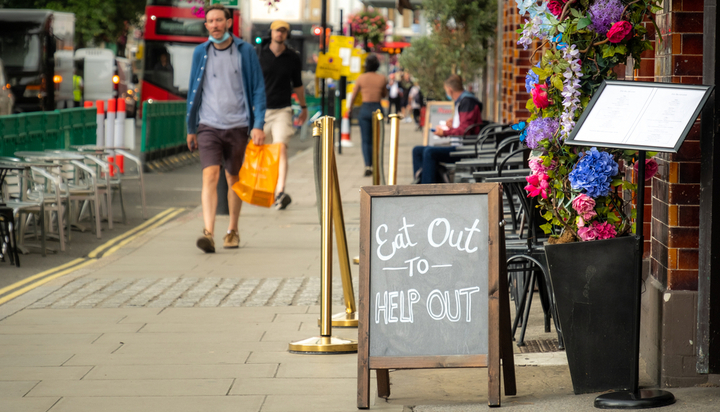

As parts of the UK see lockdown restrictions replaced with the new tier system, the battered hospitality sector faces an uncertain future.
The full scale of the impact Covid-19 has had on the hospitality industry in the UK is not yet been fully established, with the Government’s support measures being criticised as insufficient.
With the UK now operating within a tier system once again, different requirements are currently in place for England, Wales, Scotland and Northern Ireland. With these restrictions sees a number of new rules for restaurants and bars.
UK pubs in tier 2, which includes London, can only open to serve “substantial meals”, while those in tier 3, like those in Greater Manchester, can only operate as a takeaway or delivery service.
Hospitality bosses said nearly nine in 10 venues believed they “are not viable to operate” within tiers 2 and 3. Since the first lockdown back in spring, 25,000 venues have closed permanently; a further 30,000 have yet to reopen.
Earlier this week, Prime Minister Boris Johnson announced an additional £1,000 grant for “wet-led pubs” – that predominantly serve alcohol – in tiers 2 and 3 who will miss out on business during the busy Christmas period.
However, UKHospitality, the leading hospitality trade association UK, criticised the move saying that its general support of the industry “falls far short of the required level to avoid catastrophic failures and widespread job losses.”
Back in August, the government launched the Eat Out to Help Out scheme to support businesses hit by the first lockdown.
The UK-wide government promotion gave diners up to 50 per cent off when eating – or drinking soft drinks – in a participating restaurant or other food establishment which signed up to the scheme. The maximum discount given per person was £10.
Businesses have claimed a total of £849m through the scheme and almost 50,000 restaurants, pubs and cafes had taken part in it by 30 September, according to Her Majesty’s Revenue and Customs (HMRC).
Press reports were positive about the take up of the scheme by customers during the first week. However, some in the industry reported concerns that the scheme had simply shifted dining patterns earlier in the week. Businesses also reported concerns about maintaining demand once the scheme came to an end.
Meanwhile, in a November interview with Sky News, Chancellor Rushi Sunak did not rule out a return to the scheme after the end of the second lockdown, prompting speculations that it might happen.
Some restaurants have extended the scheme into September and October, while others are planning to resort to it in December in a bid to reinvigorate their operations.
Recent research from the University of Warwick suggests that the government’s Eat Out to Help Out scheme caused a “significant” increase in new coronavirus cases and contributed to the “acceleration” of the pandemic.
The associate professor behind the study, Dr Thiemo Fetzer, said the Eat Out to Help Out initiative “shortened the time between the UK’s first and second coronavirus waves”.
The University of Warwick research states that areas with high uptake saw a decline in new infections the first week after the scheme ended.
As the discount dining initiative came to a close in August, visits to restaurants started to decline – indicating that its positive economic impact was short-lived.
The study follows Prime Minister Boris Johnson admitting that the government initiative may have exacerbated the rise in Covid-19 cases seen across the UK.
The UK’s government approach towards the hospitality sector in the times of the pandemic was also criticised by its scientific advisor, professor John Edmunds.
Encouraging the public to visit bars and restaurants and then closing hospitality due to a spike in Covid-19 cases is not a “sensible way to run the epidemic,” Edmunds said, demanding instead a long-term strategy for balancing the economy and the pandemic.
